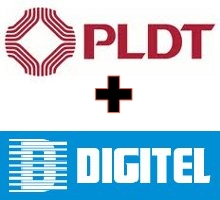DEAR INVESTOR JUAN
Dear Investor Juan,
I bought a pension plan in December of 2003 at 2,700 pesos monthly. I paid 60 installments of 2,700 pesos so by November 2008, I was already fully paid. The yearly cash benefits of the plan will start on 2013 at 22,500 per year. I'll be receiving this for 10 years and on the tenth year (2023), I'll be receiving an additional 150,000 pesos. A few days ago, my agent called me and said that they are offering an Enhanced Plan Incentive which means I could cash in on the insurance now at Php 172,088.67 (option available only until November so your speedy advice will be greatly appreciated). Should I take this alternative and invest the money on other wealth management options like UITF's or would I be earning more if I go with the original payment schedules?
Respectfully Yours,
Anonymous
Dear Anonymous,
I hope you won't mind if we skip the pleasantries and go to the heart of the matter.
The first step in analyzing a problem like this is to organize and present the given information in a more understandable manner. I have taken the liberty of doing this using Google Spreadsheets, as I present below.
To keep things simple, I have aggregated monthly cash flows in yearly terms, although you may apply the procedure I'll discuss here to monthly cash flows as well if you want more precision. You made your first 2,700 peso payment in December 2003, which means that you have completed a year's worth of payments--or 32,400 pesos--in November 2004, which I have designated as end-of-year 2004, or the end of the first year of our analysis (year 1). Four such annual payments follow, up to 2008. I used parentheses to represent these cash flows to indicate that they are negative cash flows or cash out flows, a distinction that is necessary for the spreadsheet formula that we are going to use later.
In the spreadsheet above, we see the two alternatives that you are presented with, which we label as A and B. Option A represents the original terms of your investment: ten annual payments of 22,500 starting in 2013 plus 150,000 pesos in 2023 (Is this correct? Or does the last 22,500 payment coincide with the 150,000 one?). Option B represents the "Enhanced Plan Incentive," which offers 172,088.67 pesos today and we conveniently represent as the end-of-2011 cash flow.
What we can first do is compute for the returns of each alternative, that is, how each alternative will have earned you per year as an investment. We do this by using the internal rate of return or IRR formula of Google Spreadsheets or Excel. Click
here and download to get a copy of the spreadsheet. In the Analysis tab, you'll see how the IRR formula is used. The computed IRR represents the annual returns of an investment, meaning choosing option A will have earned you an annual return of 6.48%
per year from 2004 up to when you receive the final payment in 2023. That, in itself, is a decent annual return that beats inflation and is comparable to long-run returns of bonds and bond funds. However, it falls short of long-term historical return of equity funds, which is around 10 to 13% per year, although this would be an inappropriate comparison to make since equities would generally be riskier than investments like yours. Option B, on the other hand, will just earn you a paltry 1.25% per year. Clearly, by just comparing the IRRs of the two alternatives, option A, or sticking to the original terms of your investment, will significantly have earned you higher returns and so should be the
economically correct alternative to choose.
Another approach would be to directly compare the cash flows before accounting for
time value of money. In making a decision like this, keep in mind that two things are irrelevant: sunk or past, irrecoverable costs, and details that are similar to all alternatives. In our problem, the payments you made from December 2003 to November 2008 fall under both categories, and should therefore not matter anymore. This means that the only relevant information are the cash flows that we expect to receive: the offer of 172,088.67 pesos today for option B, and the future payments for option A. If we arbitrarily assume that we are going to choose A over B, then we should subtract the option B cash flows from the option A cash flows to get the
relevant incremental cash flows for our analysis, which is presented in the "A over B" column of the Analysis tab. We see in this column that choosing A involves foregoing the 172,088.67 peso cash flow today of option B--essentially a cash outflow, or an investment outlay--for the promise of receiving the future cash flows of option A. We can thus look at the "A over B" decision as an investment in itself, since it has an outlay, future benefits, and consequently, an IRR of its own.
The IRR of choosing A over B is 10.12% per year from today to 2023, a number that represents
how much more you will have earned from A than B if 172,088.67 is all you'll get from B. Does this mean you should choose A over B? Well, not necessarily because as you have pointed out, you can always take the cash today and invest it in another instrument, asset, or business. If you have 172,088.67 pesos today and you think you can consistently earn more than 10.12% per year in the next 12 years from it, then it would make more sense to choose B instead. So the next question is, can you?
I hope I was able to sufficiently answer your question, Anonymous. However, please remember that we have only considered economic factors in our analysis; in making this decision, you should of course also be mindful of other factors. Is there pressing need for the money now? What is the likelihood that the insurance provider will still be in business in the next 12 years? And so on. :)











